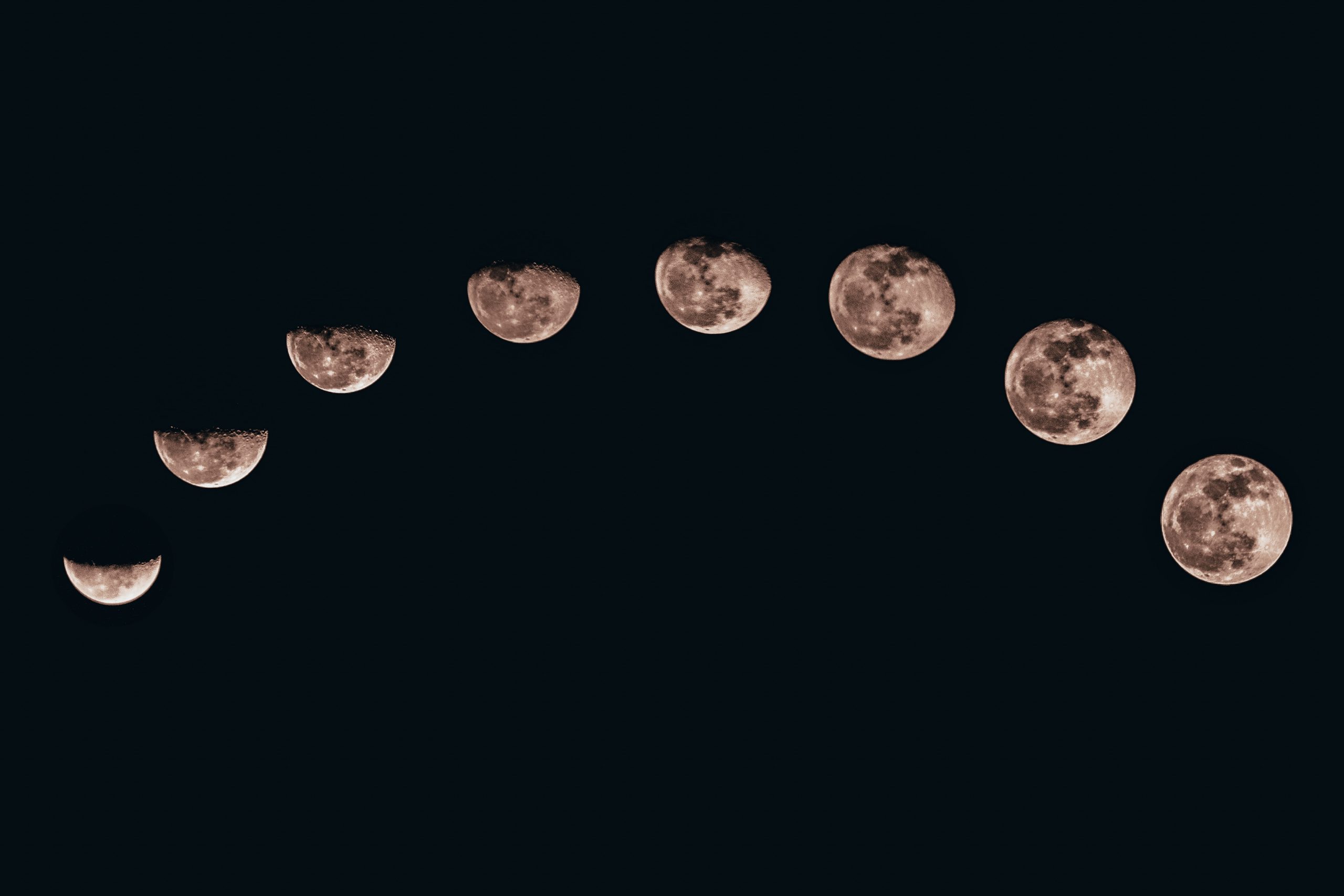What Does the Phase of the Moon Mean?
Have you ever looked up at the night sky and wondered about the different phases of the moon? The moon is one of the most visible celestial objects in the night sky, and its appearance is constantly changing. From a thin crescent to a full circle, the moon goes through different phases as it orbits around the Earth. In this blog post, we will explore what these phases mean and why they are so fascinating to astronomers, astrologers, and even curious stargazers like us!
The Lunar Cycle and Its Phases
The lunar cycle is the period of time it takes for the moon to complete a full orbit around the Earth. This cycle takes approximately 29.5 days, which is why we commonly refer to it as a “month.” During this time, the moon goes through eight distinct phases:
- New Moon
- Waxing Crescent
- First Quarter
- Waxing Gibbous
- Full Moon
- Waning Gibbous
- Last Quarter
- Waning Crescent
Each phase represents a different fraction of the moon’s surface that is illuminated by the Sun. To understand this better, let’s dive into each phase and explore what they mean.
New Moon
A new moon occurs when the moon is positioned between the Earth and the Sun. In this phase, the side of the moon facing Earth is entirely dark. The new moon is often characterized by its absence from the night sky, as it appears to blend with the background stars. It marks the beginning of a new lunar cycle.
Waxing Crescent
After the new moon, a small sliver of the moon becomes visible in the evening sky. This is known as the waxing crescent phase. The term “waxing” indicates that the illuminated portion of the moon is gradually increasing. During this phase, the crescent shape becomes more visible each night, and stargazers eagerly anticipate the moon’s illumination to grow.
First Quarter
As the name suggests, the first quarter phase occurs when the moon has completed about one-quarter of its orbit around the Earth. In this phase, exactly half of the moon’s visible hemisphere is illuminated. The first quarter phase is often mistaken for a half moon as it appears to be divided into equal parts.
Waxing Gibbous
The waxing gibbous phase follows the first quarter and is characterized by an even greater illumination of the moon. “Gibbous” refers to the moon shape, which is more than a half-moon but less than a full moon. During this phase, the moon continues to wax, becoming more luminous each night.
Full Moon
The full moon is perhaps the most recognizable and captivating phase. It occurs when the moon is on the opposite side of the Earth relative to the Sun. In this phase, the entire face of the moon is visible from Earth as it basks in the sunlight. The full moon is often associated with folklore, myths, and various cultural celebrations.
Waning Gibbous
Once the full moon phase ends, the moon begins its waning phase. The first phase of this stage is known as the waning gibbous. The illuminated portion of the moon gradually decreases, moving closer to a half-moon shape. Stargazers who enjoyed the brightness of the full moon may witness its gradual dimming during this phase.
Last Quarter
As the moon continues its orbit, it reaches the last quarter phase where exactly half of the moon’s visible hemisphere is again illuminated. This phase is often referred to as a half moon as well, but it occurs at a different point in the lunar cycle compared to the first quarter.
Waning Crescent
The final phase of the lunar cycle is the waning crescent. During this phase, only a small sliver of the moon is visible in the early morning sky. The moon appears to become thinner and less illuminated with each passing day, eventually leading back to the new moon phase and starting the cycle anew.
The Significance of Moon Phases
The phases of the moon hold various significances across different fields of study and cultures. Let’s explore a few examples:
Astronomy
For astronomers, the moon’s phases are critical for understanding lunar dynamics and mapping the moon’s surface. By observing the moon at different phases, scientists can study the variations in lunar landscapes, such as craters, mountains, and maria (dark regions).
Astrology
Astrologers believe that the phase of the moon at the time of a person’s birth holds deep symbolism and influences their personality traits. The new moon is associated with beginnings and new opportunities, while the full moon is believed to bring heightened emotions and energetic shifts.
Tides
The phases of the moon also have a significant impact on Earth’s tides. During the full and new moon phases, the combined gravitational forces of the Sun and the moon align, resulting in higher tides known as spring tides. These tides are ideal for activities such as surfing or beachcombing.
Conclusion
The phases of the moon offer us a captivating glimpse into the celestial dance between the Earth, moon, and Sun. From the waxing crescent to the waning crescent, each phase carries its unique symbolism, scientific importance, and cultural significance. The next time you marvel at the moonlit night sky, take a moment to appreciate the beauty and wonder of its ever-changing phases.
Table of Contents
